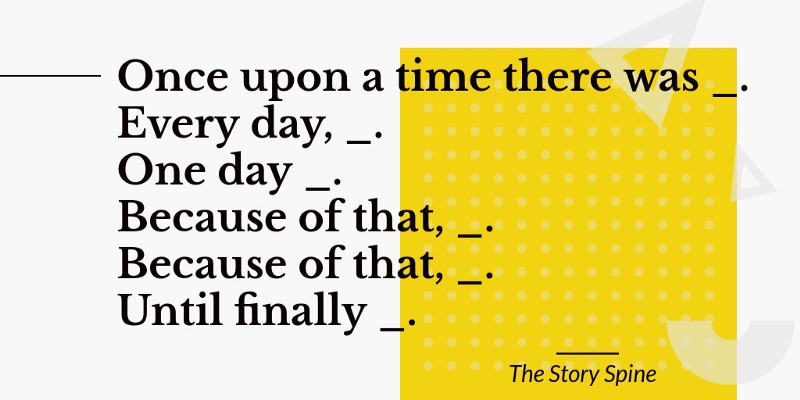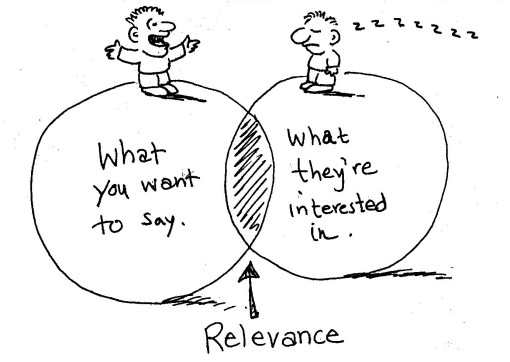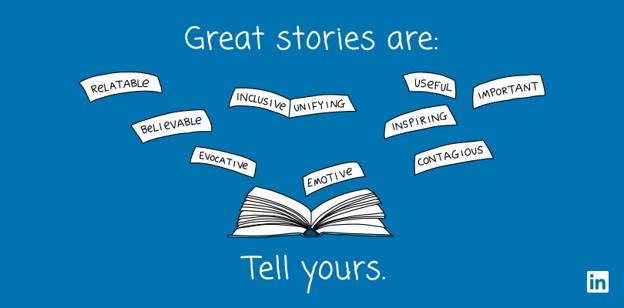Have you ever read something, unable to look away from it, and wished that you could have written something like that for a press release? Well, good news — now you can! All you need is the fundamentals of storytelling, a pinch of creativity (okay, maybe more than a pinch …) and you’re in business!
So, let’s get started with the basics — what seperates a
good story from a
great one?
Great stories have a few things in common:
- They are universal: Almost anyone can relate to that story.
- They have a clear structure and purpose: There is a reason that story is being told.
- They have likeable characters: There is someone to root for (often an underdog).
- They appeal to emotions: They make people feel something.
- They are surprising: They are not completely predictable — there are some twists and turns.
- They are simple and focussed: It's clear what the story is about and it is easy to follow.
With that in mind, let's look at six lessons that every PR professional needs to learn:
Lesson 1: Refer to archetypes
Struggling to figure out what story you want to tell with your press release? Why not take a look at the classics?
In an article for
The New York Times, Michiko Kakutani says that there are only seven basic plot types. He says that every story ever written falls into one of these seven categories:
- ‘David and Goliath’: Think ‘tiny startup aims to unseat the multinational market-leader’.
- Rebirth or renewal: Your brand has just released a new app! How cool?!
- The classic quest: Your brand is on a mission to improve consumers lives by doing X, Y and Z.
- Transformation: Your brand is changing the way the industry does things. Tell me more ...
- Rags to riches: Your now successful brand started out as a mere pipedream.
- Tragedy: How a bad situation was used as the inspiration for your brand’s product/service.
- Comedy: A humorous take on the human condition — and how your brand fits in.
So, when it doubt, take a lesson from the masters amd see what you can come up with.
 The Story Spine - Emma Coats
The Story Spine - Emma Coats
Lesson 2: Get to know your audience
Before you can start putting together a great story, you’ll need to know who you’re speaking to. And simply knowing your audience’s demographics is not enough; you need to have a deep understanding of their interests and desires.
By knowing what they listen to, what they read and what they enjoy, you’ll be able to craft a story that will resonate with them — and build a relationship that has long-term value.
While (like a lot of brands) you can make assumptions about your audience, a profound knowledge of your audience will allow your story to connect with them on more than just surface-level issues.
So, how do you get to know the people you are trying to reach?
Research, research, research. Surveys and analytics can provide you with all the information you need to build up a solid audience profile that can help you map out your communication strategies.
 Interaction Design Foundation
Interaction Design Foundation
Lesson 3: Consider all the channels
There’s more than one way to tell a story. And there are numerous channels that can be utilised for effective storytelling — provided that you understand the channel and how to get the most out of it.
Blog posts, newsletters, booklets, white papers, social videos, animations, graphics, photographs and books are some of the options you have. The bottom line is —
it doesn’t have to be a press release.So once you have an understanding of what your audience cares about, and you have an idea of the story that you want to tell, you have to start thinking about which mediums will work best to tell it — and what elements you will need to make that story successful on each platform.
For example, if you want to tell your story using a video on social media, it will need a lot of visual elements and it will need to be under 30 seconds for the most impact. However, if you decide to tell your story with a white paper, there will need to be a lot of text and graphic laid out neatly.
 LinkedIn
LinkedIn
Lesson 4: The origin story isn’t the only story
Some brands have fascinating backstories, and some just don’t. If your client is one of those brands without a good back story, don’t make one up or exaggerate the details to make it sound more exciting. It just won’t end well.
The ‘birth’ of the brand isn’t the only kind of story that is important to tell; you should consider what the brand has done differently to its competitors, or how it plans to help the community or even the world. Those are good stories too!
And since we’re living in the age of social media, why not reach out to your audience to find out how your brand has affected their lives? Let your audience tell you
their story and make it a part of yours.
 Alex Clifford Blog
Alex Clifford Blog
Lesson 5: Use your data
Data is one of the most important elements in successfully storytelling for PR professionals. Why, you ask? Well, there is
no way to successfully reach people without knowing a bit about them.
Gather some insights about your audience and try to find stories that will resonate with them. If you simply create stories without knowing about your audience, you may find your content to be a bit of a flop.
 Adweek
Adweek
Lesson 6: Connect emotionally
Successful stories are the ones that tap into our emotions; they make us
feel something. They are the ones that we
enjoy hearing, seeing and reading and, most importantly, they are the ones that we
remember.
When crafting your content, you should aim to connect with your audience on an emotional level, whether that is through entertainment, achievement, nostalgia or something else entirely.
Why not try out ‘day in the life’ tales, anecdotes, memories or throwbacks from the brand you’re working with? Even better, tell
your stories and then encourage your audience to share theirs.
 Chatbots Magazine
Are there any other tips you use when crafting stories? Share them with us in the comments section below.
*Image courtesy of Vecteezy
Chatbots Magazine
Are there any other tips you use when crafting stories? Share them with us in the comments section below.
*Image courtesy of Vecteezy